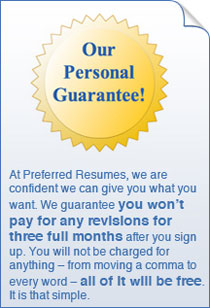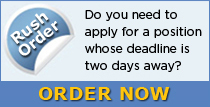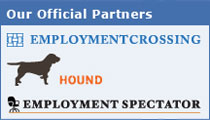Resume headings - what information to include and how to format it
|
|
Stick to the basic font types – Arial and Times New Roman are most commonly used and are least risky when it comes to formatting your resume. Don’t go overboard on the font size either. Your name should be in point size 14 or 16; all other headings should be in 12 or 14 point font, while the remaining text of your resume should be between 10 and 12 points. Along with your name, the very top of your resume should contain your mailing address, your email address, and at least one phone number where you can be reached. It is best to include a physical mailing address over a P.O. Box, whenever possible. You should never include an email address at your current place of employment (believe us, it happens). A helpful hint about listing your email address – make sure that it contains your name, as this helps you appear more professional. You can create a free Yahoo email account; it also maybe helpful to have one email address as a point of contact for your job search. At least one phone number should be listed; make sure to indicate if you are listing a home or a mobile number. If you have a professional web site, you can include the address to it along with your contact information. Please note, only do so if there isn’t anything on the web site that is personal; the only reason your potential employer may want to look at a web site is if your professional portfolio or a copy of your resume can be found there.
Whether you decide to create a chronological or a functional resume, you will need to separate the information by headings. The best advice we can give you is to keep the section headings professional and stick to the basics. Don’t try to come up with creative titles for your professional summary, or for your qualifications. Your chronological resume should have the following sections/titles:
- career objective
- professional summary (optional)
- professional experience/work experience/experience
- education
- publications/special achievements (if applicable)
- qualifications/skills
- references/references and portfolio
A functional resume is slightly different, and the headings you chose will truly depend on the skills you are trying to highlight. You should include:
- career objective
- education
- professional skills/professional qualifications (this section will include sub-headings as they relate to specific qualifications you want to promote, such as communications, customer relations, managements, etc.)
- work experience/work history (if applicable; should only include dates, titles, companies and locations without listing responsibilities)
- volunteer work/activities (if applicable)
- references
These are the typical sections of chronological and functional resumes. Do some research on resume styles and find sample resumes of professionals in your industry. You may need to adjust these headings based on your field, although the content should be consistent across industries. Stick to the basics; don’t try to be creative in order to stand out. A professional and polished resume will get you noticed, so do your best to create a resume that is error free and best supports your career objective.




